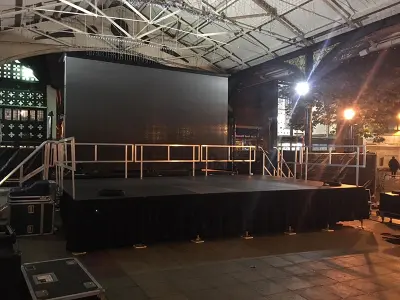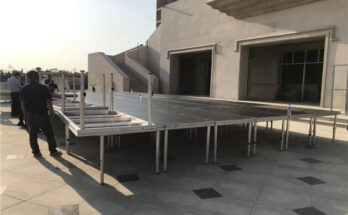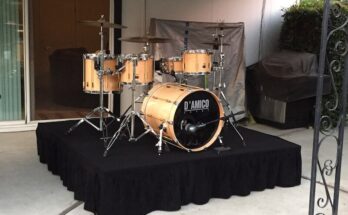Starting an event company requires careful investment in quality equipment that balances immediate needs with future growth potential. Portable staging represents one of the most significant initial investments you’ll make, serving as the literal foundation for your events. Based on the offerings at Portable Stage UK, here’s a comprehensive guide for newcomers to the industry.
Understanding Your Core Staging Needs
Before making any purchases, assess your typical events:
- What types of events will you primarily service? (Corporate presentations, musical performances, fashion shows, educational settings)
- What venues will you typically work in? (Indoor halls, outdoor festivals, schools, corporate spaces)
- What is your averag
e audience size and configuration?
4. What transportation capabilities do you have? (Van, truck, trailer capacity)
These considerations will guide your initial investment strategy.
Learn More: Lightweight Portable Staging for Weddings: The Perfect Foundation for Your Love Story
Essential Starter Kit Components

For new event companies, I recommend starting with these fundamental components:
1. Modular Staging Platforms
Begin with 8-12 standard deck units (typically 2m x 1m) which provides enough flexibility for small to medium events. The Ultralight Aluminium Stage Deck system on the website offers an excellent balance of durability and portability for newcomers.
2. Adjustable Legs
Purchase legs in various heights (20cm, 40cm, and 60cm sets) to accommodate different venue requirements. The telescopic legs available on Portable Stage UK allow for precise height adjustments, which is invaluable when working across diverse venues.
3. Stage Skirting
Professional presentation requires proper skirting. Start with enough to cover your initial deck configuration. The pleated stage skirting shown on the site creates a polished appearance that clients expect.
4. Safety Rails
Safety should never be compromised. Include safety rails for any configuration where the stage height exceeds 60cm. The website offers modular safety rail systems that integrate seamlessly with their staging platforms.
5. Access Solutions
At minimum, include one set of steps appropriate for your most common stage height. The adjustable step units available would be ideal for a starter kit as they can adapt to various configurations.
Scalable Purchasing Strategies for Growing Businesses
As your event company grows, you’ll need to expand your staging inventory strategically:
Phase 1: Core Capability (Initial Investment)
Focus on versatility with a modest number of standard platforms and variable height legs. Budget approximately £5,000-£8,000 for this foundation, based on the pricing indicators on the website.
Phase 2: Expanded Capacity (6-12 months)
Once you’ve established regular clients, invest in:
- Additional deck units to handle larger events
- More diverse leg heights for creative configurations
- Specialized components like corner pieces and triangular sections
Phase 3: Specialization (12-24 months)
As you identify your company’s niche, invest in specialized equipment:
- Tiered seating solutions if focusing on audience arrangements
- Custom-sized platforms for unique venue challenges
- Advanced accessories like wheelchair ramps for accessibility
Phase 4: Redundancy and Efficiency (24+ months)
Build redundancy in your most-used components and invest in:
- Transport solutions (custom cases, trolleys)
- Quick-assembly systems for faster setup
- Backup equipment for simultaneous events
Learn More: Collapsible Stage Packages for Choirs: Flexibility Meets
Smart Investment Considerations
The Portable Stage UK website highlights several important factors worth considering:
- Material Quality: The aluminum decking systems offer superior weight-to-strength ratios compared to wood en alternatives, reducing transportation costs and setup time.
- Compatibility: Ensure all components use compatible connection systems. Their modular approach allows for expansion without obsolescence.
- Storage Footprint: Consider your warehouse space limitations. The collapsible leg systems and stackable decks minimize storage requirements.
- Maintenance Costs: Higher initial investment in quality systems (like those featuring on the site) typically results in lower long-term maintenance expenses.
- Rental Potential: Purchase components that have high rental demand during your slower periods to maximize ROI.
By starting with these essential components and following a phased growth strategy, new event companies can build a versatile, professional staging inventory that grows alongside their business while minimizing financial strain during the critical early period of operation.
Read the full guide: https://www.portablestage.co.uk/buy-portable-staging/




